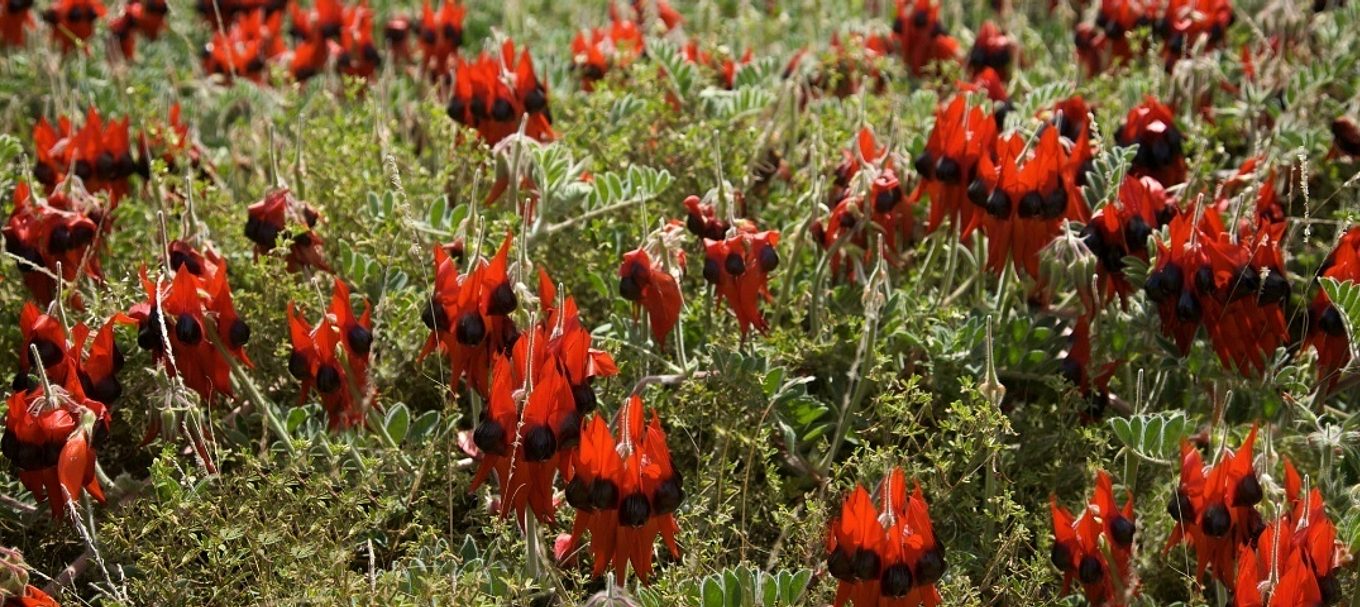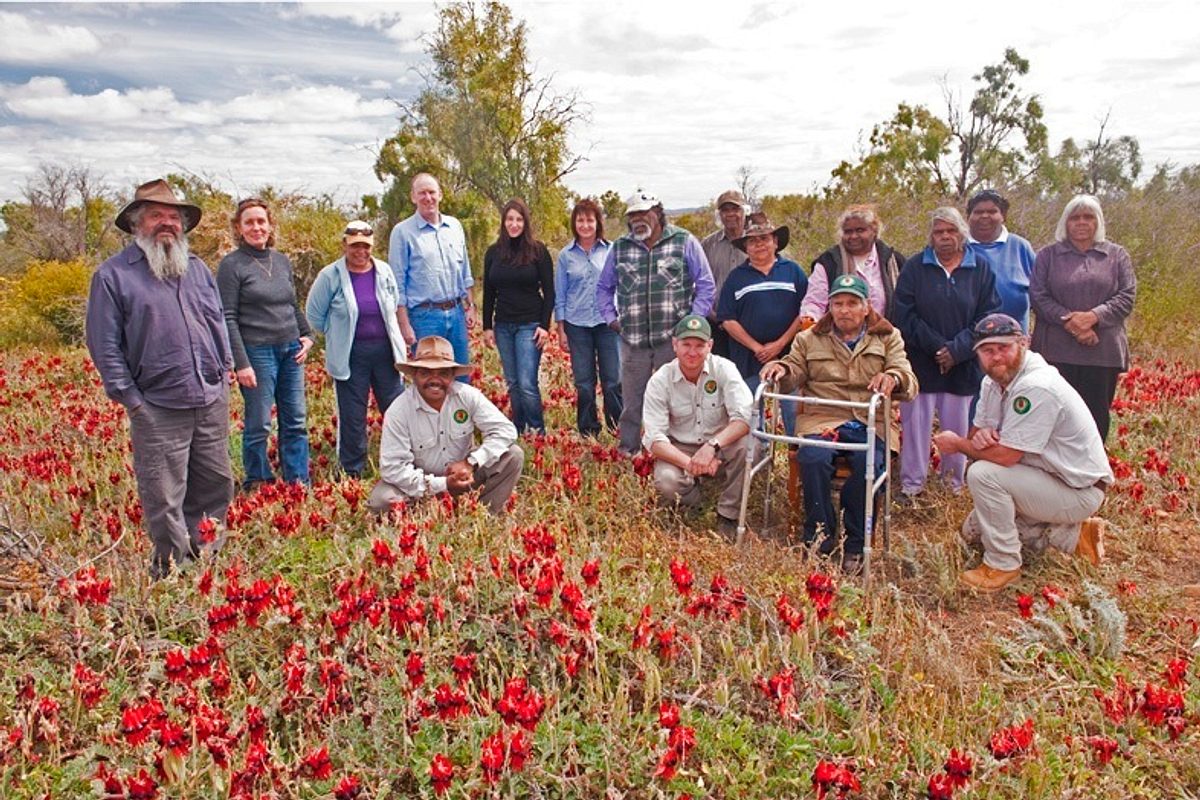
A Reconciliation Week story
‘If there's one story I reckon needs telling, it's about Aboriginal and Department of Environment, Water and Natural Resources Co-Management of parks,’ says Natural Resources Northern and Yorke Regional Manager Trevor Naismith.
'I arrived in the then Far North Region in 1990 as a brand new District Ranger. Early on, I accompanied the then Minister for Environment Susan Lenehan on a field trip across the far north and to Witjira National Park on the NT border. The Minister met with Lower Southern Arrende and Wangkangurra people and their message was simple – they wanted a greater say in running their traditional lands which was formerly Mt Dare Station and now comprised the National Park.
'A few months later in 1991, we sat down at Oasis Bore, on the dry flood out of the Finke River, one of the Earth's oldest watercourses and where the Finke disappears into the western edge of the Simpson Desert. The Oasis meeting was largely organised by Arthur Ah Chee, a Wangkangurra man whose traditional country runs across the Simpson Desert to Birdsville. Arthur was passionate about what he called “joint management" and he still is, a quarter of a century later.
'We listened to many moving stories about just how important Witjira is to the Lower Southern Arrende and the Wangkangurra people. Together, they formed the Irrwanyere Aboriginal Corporation as a step towards co-management. We managed to get a Co-Management Agreement (CMA) in place and we found some money to employ Aboriginal Rangers, but it wasn't all smooth sailing. We managed to keep Dean Ah Chee on the books and Deany is still working with us today out of Port Augusta.
'We kept Witjira going with what is now called FIFO (fly in fly out). We didn't call it that back then and it was a tough gig and it still is. We had a vehicle and equipment based at Witjira and would fly out of Hawker in the departmental Cessna aircraft for a 10 day stint at Witjira and then fly home for 4 days. We swagged it at Witjira in all weather and often did battle with clouds of flies during the day and swarms of mosquitos at night. Tough on the partners and kids back in Hawker too. Anyhow, I digress.
'A few years later we had another crack at Co-Management this time with a Co-Management Board and legislative changes to the National Parks and Wildlife Act that supported what we were trying to do. The Board prospers to this day and I was privileged to chair the Board for a few years and work with Lower Southern Arrende and Wangkangurra members. We completed an extraordinary amount of work over the years that have seen the restoration of traditional names to supplement the whitefella names for landscape features, interpretive signs have gone up, heritage sites are protected, campgrounds have been revitalised and revegetated, horses eliminated and donkeys and camels controlled. It hasn't been easy going at times but heck, we've done it! A few years ago I was asked to MC the Consent Determination ceremony where a sitting of the Commonwealth High Court is held 'on country' to formally grant title of the land to Traditional Owners. It was a huge honour for me and another highlight in a fantastic career.
'Because I've moved around a fair bit with the job, I've had some wonderful opportunities for involvement with other Co-Management arrangements including a couple of years working with Anangu from Maralinga-Tjarutja and Yalata over Mamungari (the great, inverted L-shaped park on the WA -SA border).
'Board meetings were rightly held in language (Pitjantjatjara) with a translator busily employed keeping us whitefellas informed of the meeting proceedings. Mamungari is a vast, amazing place but is only part and parcel of a much greater landscape where the concept of boundaries, be they national park or even state, is irrelevant to Anangu.
'These days, I'm a member of the Vulkathunha-Gammon Ranges Co-Management Board and I'm in good company with Adnyamathanha Board Members, many of whom are old friends, neighbours and workmates from my decade of living and working in Hawker. This is another Board who have accepted responsibility for a magnificent park and run with it. Much has been achieved and the Board are justly proud of what they are doing.
'There have been a couple of pivotal people in this journey that have had a profound influence on me. One was the late Rex Stuart, an Arabana man. Sitting around a campfire one night, Rex told me how he used to work alongside whitefella ringers all day when he was a young fella working for a big South Australian pastoral company. But as an Aboriginal, he had to eat his tea out on the wood heap and not in the Mess with the other station hands. I was outraged but Rex wasn't bitter about this treatment but he was reflective on what were the norms of the time. Rex had a great generosity of spirit and spoke five Aboriginal languages. He used to volunteer his time as an interpreter at the Port Augusta Court as he reckoned Aboriginal people weren't getting a fair go because they couldn't tell the magistrate their side of a story. He was that kind of a bloke. Rex passed a few years back when he had an accident on Huck’s Hill in the Flinders. Spare a thought for him when you go past his roadside memorial on the way from Wilpena to Oraparinna. I always do.*
'The other big influence on me was the late Gilbert Coulthard, an Adnyamathanha man who was one of the first Aboriginal Rangers in the state. Uncle Gil was prepared to take us young whitefellas under his wing if he reckoned you were alright. He was a natural educator, mentor and guide. His sense of humour was wicked and mischievous but woe betide anyone who wasn't listening when Uncle was trying to teach you something. He had a fearsome temper and you didn't forget a dressing down from Gil in a hurry. He treated us all as family and our kids loved him as their Adnyamathanha Grandfather. Years down the track, even as I write this, I'm still moved to tears. These days when I go to Balcanoona for a Board meeting, the spirit of the old Uncle absolutely pervades the place. I keep expecting to see him walking around a corner calling out his familiar 'Gooday'. I miss him greatly.
'Well that’s about it for my long and rambling story about Co-Management. Why is it important to me? Well it was Aboriginal country long before us boat people arrived. Their forebears were displaced and treated pretty badly. So maybe Co-Management is natural justice or maybe a much simpler Australian concept of 'a fair go'. And it's been great to work for the Department for Environment and Water (DEW) which has been consistently prepared to give Aboriginal people a fair go. While the journey has been along a rough road at times, it's only right that Aboriginal people are given self-determination over the management of their traditional lands.
'Surely, there can be no better example of reconciliation than Co-Management?'
Below is a photo of the Vulkathunha-Gammon Ranges National Park Co-management Board and members of the Adnyamathanha community. Find out more online about Reconciliation Week and Reconciliation Week activities .

* The wording and references to these events were approved by Arron Stuart.





